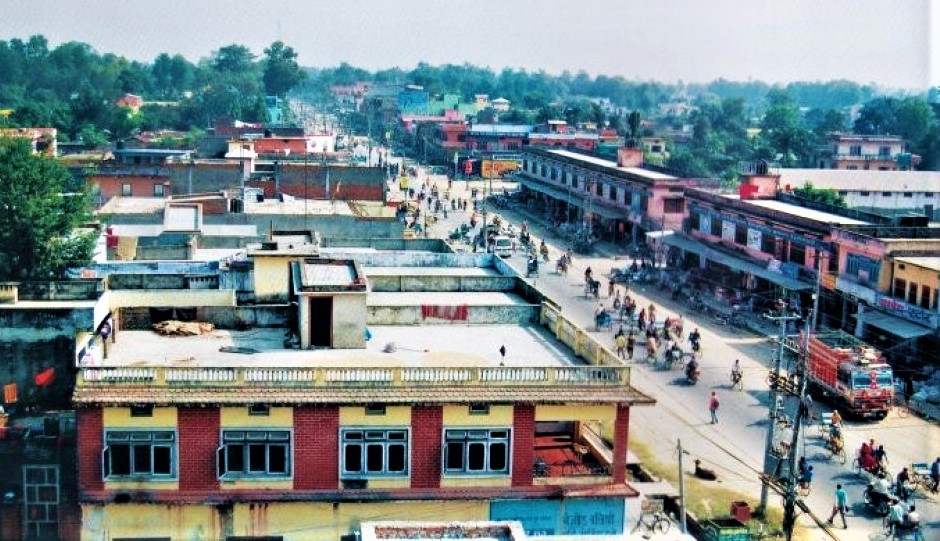Everything you need to know about Dhangadhi | Interesting things about Dhangadhi City
Dhangadhi is a city located in the Kailali District of Sudurpashchim Pradesh in Nepal. It is the largest city in the far-western region of Nepal and serves as an economic and administrative hub for the region. Here's everything you need to know about Dhangadhi:
1. Location and Geography:
Dhangadhi is situated in the Terai region of Nepal, near the border with India. It lies in the western part of Nepal, approximately 500 kilometers west of the capital city, Kathmandu. The city is located at an elevation of about 109 meters above sea level and is surrounded by agricultural plains and forested hills.
2. Population:
According to the 2011 census, the population of Dhangadhi was around 174,888. However, the population has likely increased since then due to urban growth and migration. The city is ethnically diverse, with people from various communities and cultures residing in the area.
3. Transportation:
Dhangadhi is well-connected by road and air. The Mahendra Highway, a major highway in Nepal, passes through the city, connecting it to other parts of the country. The nearest domestic airport, Dhangadhi Airport, provides air connectivity to major cities in Nepal, including Kathmandu.
4. Festivals and Culture:
Like the rest of Nepal, Dhangadhi celebrates various religious and cultural festivals. Major festivals such as Dashain, Tihar, and Teej are widely celebrated by the residents. The city also hosts cultural events and programs that showcase the diverse traditions and customs of the region.
5. Sports:
Sports, particularly cricket and football, are popular in Dhangadhi. The city has its own cricket stadium, the Fapla Cricket Ground, where local and national-level cricket matches are held. The city has produced several talented players who have represented Nepal in international cricket tournaments.
6. Economy:
Dhangadhi's economy is predominantly based on agriculture. The fertile plains surrounding the city make it an ideal location for cultivating crops such as rice, wheat, sugarcane, maize, and vegetables. The region's agricultural produce not only serves the local market but also contributes to the national supply chain. Additionally, Dhangadhi's proximity to the Indian border facilitates cross-border trade, making it a significant trading hub for goods and commodities.
In recent years, the city has witnessed the establishment of small-scale industries and businesses. These include manufacturing units, food processing plants, and trading enterprises, contributing to economic growth and employment opportunities.
7. Education:
Dhangadhi boasts a range of educational institutions, providing educational opportunities to the local population. The city has numerous primary and secondary schools offering education in both Nepali and English mediums. Some notable schools include Mahendra Multiple Campus, Kailali Multiple Campus, Shree Rastriya Secondary School, and Dhangadhi Boarding School.
For higher education, Dhangadhi hosts colleges affiliated with Tribhuvan University and Far-Western University, offering undergraduate and postgraduate programs in various disciplines. These institutions include Kailali Multiple Campus, Sudur Paschimanchal Campus, and National College.
8. Tourism:
While Dhangadhi may not be a prominent tourist destination in Nepal, it does offer a few attractions for visitors. The Ghodaghodi Lake, located approximately 20 kilometers from the city, is a Ramsar site and a significant wetland ecosystem. It attracts nature enthusiasts and birdwatchers due to its rich biodiversity, including migratory birds.
Shuklaphanta National Park, situated in Kanchanpur district near Dhangadhi, is another notable tourist spot. The park is known for its diverse flora and fauna, including Bengal tigers, one-horned rhinoceros, swamp deer, and various bird species. Visitors can explore the park through guided safaris and nature walks.
9. Infrastructure:
Dhangadhi has seen substantial improvements in its infrastructure in recent years. The road network has been expanded and upgraded, connecting the city to major towns and cities in Nepal. The Mahendra Highway, passing through Dhangadhi, is a vital transportation route that facilitates movement to and from the city.
The availability of electricity has improved, with efforts to increase power supply and reduce outages. Communication networks, including mobile and internet services, have also been enhanced, providing better connectivity to the residents.
10. Healthcare:
Dhangadhi has several healthcare facilities catering to the medical needs of the local population. The city hosts hospitals, health centers, clinics, and pharmacies offering primary healthcare services. Notable healthcare institutions in Dhangadhi include Seti Zonal Hospital, Kailali Eye Hospital, Shree Anand Hospital, and Siddha Ayurvedic Hospital.
For specialized treatments, people often travel to Kathmandu or other major cities in Nepal, where tertiary care hospitals and advanced medical facilities are available.




.jpg)



